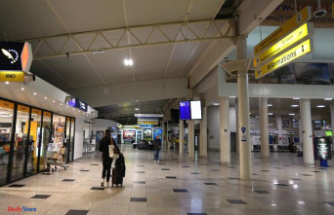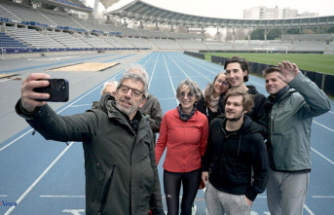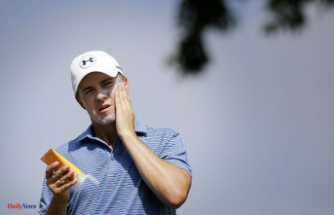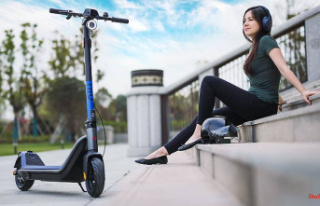Even a good memory is sometimes under stress - and then it quickly forgets where you just put the key or the smartphone. But experts have solutions - mental and technical.
Where's the key now? Help, my wallet is gone. And the glasses! Some things you like to misplace and then have to go on the annoying and time-consuming search again and again. But remembering everything all the time is hardly possible - is it? Yes, say experts.
But first a question: Why do we actually forget so quickly what we have just filed away?
Forgetfulness in everyday life is often related to a lack of concentration, says memory trainer Margit Ahrens. "Often we think in multiple ways, are mentally already one step ahead and then don't pay attention to where we put the key." Distractions like the radio playing in the background or the news you're reading on your smartphone also prevent you from concentrating.
The first step towards change is therefore awareness, says memory trainer Markus Hofmann. His advice: if you put down your keys or wallet, consciously say goodbye to them. "In my mind, I say to my key, for example, 'Bye, don't run away, I'll be back in three hours.'" This allows you to remember more consciously where and when you put the key down.
Another strategy is fixed storage locations for certain everyday objects. Margit Ahrens recommends that these places should be very obvious, especially at the beginning, when you first have to memorize them. She is a board member of the Federal Association for Memory Training (BVGT).
For the house key, for example, this could be a conspicuous bowl on a chest of drawers near the front door. Ahrens advises setting up this storage location consciously: "The best thing to do is make friends with this place and give it a name."
If you want to be a little more flexible and still remember everything, you need this fixed place in your head, says author and learning coach Markus Hofmann. A place where you can save something and retrieve it at any time. "I call this a mental mailbox."
The point here is not only to remember something rationally, but also to remember it visually - whether the storage locations for keys and purses or even for entire to-do or shopping lists. A popular method recommended by both Ahrens and Hofmann is the "body list". You choose fixed stations on the body, such as feet, knees, stomach, elbows and eyes, and connect them to ingredients or tasks that you want to remember.
For example, if the shopping list includes tomatoes, butter, and milk, a possible mental association might look like this: you stamp the tomatoes with your feet into ketchup, the butter is melted in the hollows of your knees, and the milk forms a small lake in your navel. "These are pictures that you don't forget so quickly," says memory trainer Ahrens.
In the supermarket you can then use the body stations to go through the shopping list. It takes a bit of practice at first, but eventually the head cinema will come naturally. "Until then, you can take the shopping list with you as a cheat sheet," says Margit Ahrens. A tip from Markus Hofmann, by the way, is to be creative with this list: "The funnier or more grotesque the pictures are, the better they stick."
However, if it does happen that you absolutely can't remember where you put the key, the memory experts recommend calm and a systematic approach. "First slow down and take five deep breaths," recommends Margit Ahrens.
Then go back the way and reconstruct the homecoming step by step. Did you already think about eating when you opened the door? Then it's quite possible that the key is next to the refrigerator, says Ahrens. When looking for an object, you should narrow down the possibilities more and more, says Markus Hofmann. "You collect all the details that you remember and go from the rough to the detailed."
If you still don't want to rely solely on your memory, you can also rely on technology. As a reminder for tasks and notes in between, various apps have long been established in everyday life, says Michael Link, editor of the magazine "c't".
If lost objects are to be found, you need devices that can be used to locate them. These are often a kind of keychain. Electrical localization is possible via Bluetooth or GPS.
Key finders that work with Bluetooth work quite well in the home, says Link. Some apps also advertise with the so-called crowd search. If you put your tracker in lost mode, the respective apps of other users react to it and the owner of the Bluetooth tag receives a message about the place and time of the last contact. The problem with this is that the apps are not widespread, so the collective search is often unsuccessful.
According to Link, exceptions to this are Apple's "AirTag" or Samsung's "Galaxy Smart Tag". The people in the vicinity of the lost item do not need a special app, just a modern iPhone or Samsung smartphone.
The trackers themselves report their location from time to time if any smartphone with similar technology happens to come within range. The location is then sent to the owner via a mobile phone connection. According to the link, GPS trackers can also be a practical search aid, but they usually only work outdoors and require significantly more power.
However, according to memory trainer Margit Ahrens, it does not make sense to hand over all of the search and memory work to technology. "Memory training is just as important as physical training." Just as a one-time visit to the gym is not enough for a fit body, the brain also needs new impulses on a regular basis. "It can be anything that is new to the brain," says Markus Hofmann. Be it brushing your teeth with the other hand or reading the newspaper on your head - it's also important that it's fun.












